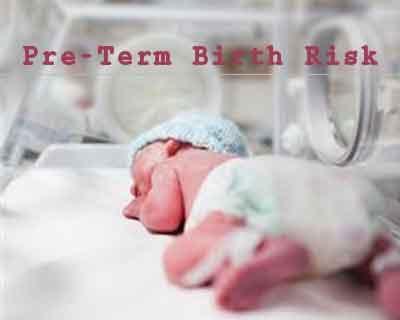- Home
- Editorial
- News
- Practice Guidelines
- Anesthesiology Guidelines
- Cancer Guidelines
- Cardiac Sciences Guidelines
- Critical Care Guidelines
- Dentistry Guidelines
- Dermatology Guidelines
- Diabetes and Endo Guidelines
- Diagnostics Guidelines
- ENT Guidelines
- Featured Practice Guidelines
- Gastroenterology Guidelines
- Geriatrics Guidelines
- Medicine Guidelines
- Nephrology Guidelines
- Neurosciences Guidelines
- Obs and Gynae Guidelines
- Ophthalmology Guidelines
- Orthopaedics Guidelines
- Paediatrics Guidelines
- Psychiatry Guidelines
- Pulmonology Guidelines
- Radiology Guidelines
- Surgery Guidelines
- Urology Guidelines
Boys at higher risk of life-threatening complications at birth: study

Melbourne : Baby boys are much more likely to experience potentially life-threatening outcomes at birth than girls, a first of its kind population based study in Australia has found.
Researchers studied data of more than 574,000 births in South Australia over a 30-year period (1981-2011), to confirm the presence of differences in birth outcomes based on the sex of the baby.
The team involving the University of Adelaide in Australia and the University of Groningen in The Netherlands evaluated the relationship between the babies' sex and adverse outcomes, such as pre-term birth, pregnancy induced high blood pressure disorders, and gestational diabetes mellitus.
"The major conclusion of our study is that the evidence is there and it is very clear: the sex of the baby has a direct association with pregnancy outcomes," said Claire Roberts, professor at the University of Adelaide.
The study found that boys are more likely to be born spontaneously pre-term.
Boys showed a 27 per cent higher risk for a pre-term birth between 20-24 weeks' gestation, 24 per cent higher risk for a pre-term birth between 30-33 weeks, and 17 per cent higher risk for pre-term birth between 34-36 weeks, researchers said. Mothers carrying boys were 4 per cent more likely to suffer gestational diabetes and 7.5 per cent more likely to suffer pre-eclampsia at term a potentially dangerous pregnancy complication characterised by high blood pressure and a large amount of protein in the urine. However, pregnant women carrying a girl have a 22 per cent higher risk for early onset pre-eclampsia requiring a pre-term delivery.
"Our results indicate there may be a need for specific interventions tailored to male and female babies, to prevent adverse outcomes for both child and mother," said Petra Verburg from the University of Groningen.
"We're investigating other factors that may predict pregnancy complications, taking foetal sex into account," added Verburg.
Researchers have previously published on sex differences in the expression of 142 genes in the placenta from normal pregnancies.
"The placenta is critical for pregnancy success. We believe that sex differences in placental function may explain the differences we're seeing in outcomes for newborn boys and girls, and their mothers," said Roberts.
The research appears in in the journal PLOS One.

Disclaimer: This site is primarily intended for healthcare professionals. Any content/information on this website does not replace the advice of medical and/or health professionals and should not be construed as medical/diagnostic advice/endorsement or prescription. Use of this site is subject to our terms of use, privacy policy, advertisement policy. © 2020 Minerva Medical Treatment Pvt Ltd